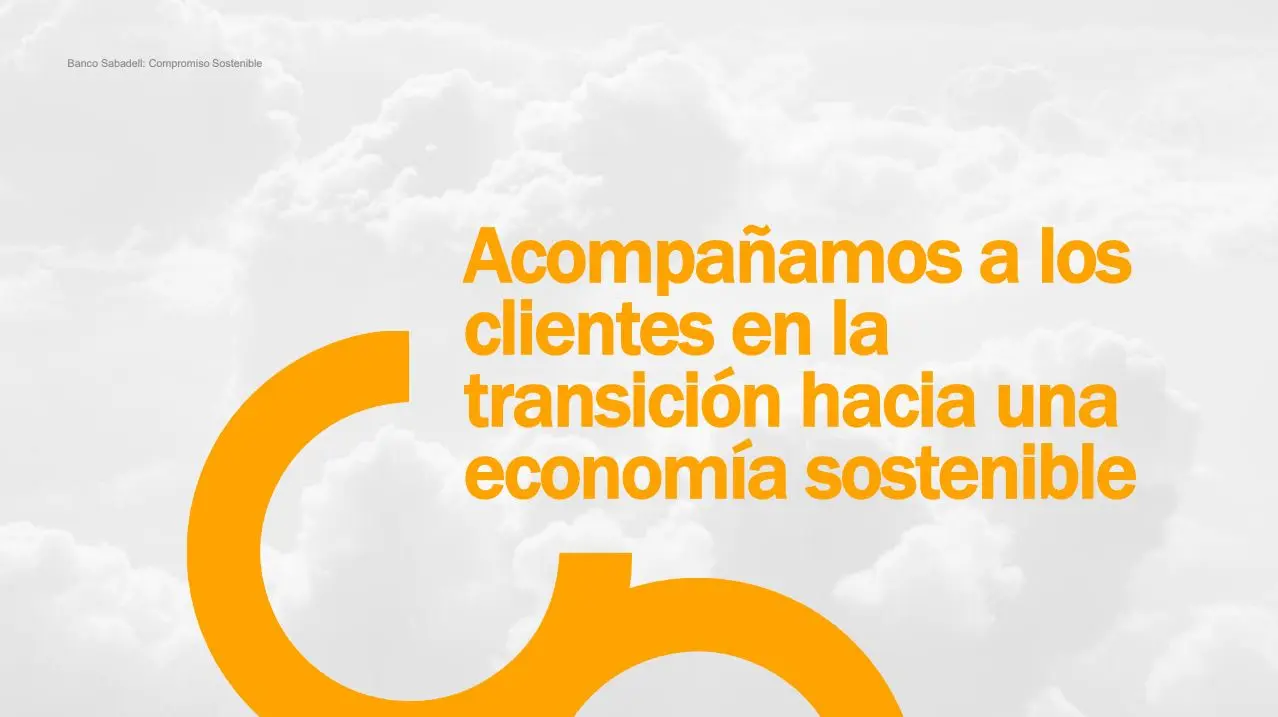The UN states: “It’s now or never.” The UN Intergovernmental Panel on Climate Change warns that CO2 emissions must peak by 2025 and then halve by 2030 to avoid the worst effects of climate change. The survival of companies will depend on how they adapt to the energy transition.
This is why today we are introducing the second of the four strategic pillars of our Sustainability Commitment: Supporting customers in the transition towards a sustainable economy.

To successfully make the transition to this new economic model, Banco Sabadell is acting from multiple perspectives. First, by setting decarbonisation pathways for its portfolio, supporting customers with training, financing solutions, and assessments of their capacities to meet and tackle ESG challenges; and second, by establishing sectoral regulations that restrict controversial activities and implement new ESG standards to align customers’ situations with regulatory requirements.
Banco Sabadell also stands out for its expertise and comprehensive service in distributing the Next Generation EU funds, representing a significant opportunity for our economy to shift towards sustainability.
In this context, Banco Sabadell has emerged as a key agent for the transition, as outlined in the second pillar of its Sustainability Commitment, which specifies supporting customers in the transition to a sustainable economy by providing the necessary information, advice, and products and services. Banco Sabadell aligns with customers’ challenges, understanding and aligning their situations with the regulatory environment, and identifying both physical and transition risks along with transformation opportunities.
As the action framework of the Sustainability Commitment states, “we will support our customers in the transition by creating solutions for all segments through specialised products and services in energy efficiency, renewable energy, and mobility.”
What commitments does Banco Sabadell make in supporting customers in the transition to a sustainable economy?
Eight commitments are prioritised:
- Decarbonise the balance sheet by reducing the portfolio’s carbon footprint.
- Understand the sustainability performance of corporate customers.
- Mitigate the impact of climate factors on risk.
- Raise awareness about the importance of the ecological transition.
- Offer sustainable finance solutions.
- Offer sustainable mobility solutions.
- Promote the energy transition.
- Provide social finance solutions.
We are now familiar with the first pillar—Moving forward as a sustainable entity—and the second pillar—Supporting customers in the transition to a sustainable economy. The eight commitments of the second pillar present specific objectives, which you can view here.